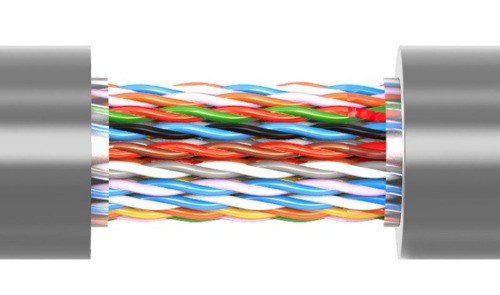Cable Core Color DIN47100 Standard
What is the DIN 47100 standard?
The DIN 47100 standard is a German standard developed to provide a consistent and reliable method for identifying individual wires within multi-core cables, primarily used in telecommunications and control applications. When connectors have more than 10 poles, the need for a clear and distinct way to differentiate each wire becomes essential. DIN 47100 addressed this requirement by establishing a specific color-coding system that assigns a unique combination of colors to each wire, ensuring ease of installation, maintenance, and troubleshooting. Although the standard was officially withdrawn in 1998 without a direct replacement, it remains widely recognized and remains a go-to reference within the cable industry. This enduring usage can be attributed to its simplicity, effectiveness, and the vast number of existing installations that rely on the standard. The color codes cover a broad range of wire counts, starting from basic pairs up to complex multi-core cables, making it a practical solution for various industrial, automation, and telecommunications settings. Despite its withdrawal, DIN 47100's legacy endures, underlining the importance of standardized wire identification in modern electrical systems.

Color code according to DlN 47100
| Core Number | Color | Core Number | Color |
| 1 | White (WH) | 31 | Green-Blue (GNBL) |
| 2 | Brown (BR) | 32 | Yellow-Blue (YWBL) |
| 3 | Green (GN) | 33 | Green-Red (GNRD) |
| 4 | Yellow (YW) | 34 | Yellow-Red (YWRD) |
| 5 | Grey (GR) | 35 | Green-Black (GNBK) |
| 6 | Pink (PK) | 36 | Yellow-Black (YWBK) |
| 7 | Blue (BL) | 37 | Grey-Blue (GRBL) |
| 8 | Red (RD) | 38 | Pink-Blue (PKBL) |
| 9 | Black (BK) | 39 | Grey-Red (GRRD) |
| 10 | Violet (VI) | 40 | Pink-Red (PKRD) |
| 11 | Grey-Pink (GRPK) | 41 | Grey-Black (GRBK) |
| 12 | Red-Blue (RDBL) | 42 | Pink-Black (PKBK) |
| 13 | White-Green (WHGN) | 43 | Blue-Black (BLBK) |
| 14 | Brown-Green (BRGN) | 44 | Red-Black (RDBK) |
| 15 | White-Yellow (WHYW) | 45 | White-Brown-Black (WHBNBK) |
| 16 | Yellow-Brown (YWBN) | 46 | Yellow-Green-Black (YWGNBK) |
| 17 | White-Grey (WHGR) | 47 | Grey-Pink-Black (GRPKBK) |
| 18 | Grey-Brown (GRBN) | 48 | Red-Blue-Black (RDBLBK) |
| 19 | White-Pink (WHPK) | 49 | White-Green-Black (WHGNBK) |
| 20 | Pink-Brown (PKBN) | 50 | Brown-Green-Black (BNGNBK) |
| 21 | White-Blue (WHBL) | 51 | White-Yellow-Black (WHYWBK) |
| 22 | Brown-Blue (BNBL) | 52 | Yellow-Brown-Black (YWBNBK) |
| 23 | White-Red (WHRD) | 53 | White-Grey-Black (WHGRBK) |
| 24 | Brown-Red (BNRD) | 54 | Grey-Brown-Black (GRBNBK) |
| 25 | White-Black (WHBK) | 55 | White-Pink-Black (WHPKBK) |
| 26 | Brown-Black (BNBK) | 56 | Pink-Brown-Black (PKBNBK) |
| 27 | Grey-Green (GRGN) | 57 | White-Blue-Black (WHBLBK) |
| 28 | Yellow-Grey (YWGR) | 58 | Brown-Blue-Black (BNBLBK) |
| 29 | Pink-Green (PKGN) | 59 | White-Red-Black (WHRDBK) |
| 30 | Yellow-Pink (YWPK) | 60 | Brown-Red-Black (BNRDBK) |
The insulation of the conductor gives the first basic color. The codes of the multi-colored identification are combined with basic color and color rings. The second and third color is printed on the basic color as a form of ring.
The ring width is 2-3 mm, A less unsharpness on the edge of the identification color and a minor pledging of both half-rings are permitted.
The cores are to be counted continuously through all layers in the same direction, beginning with the outer layer towards the inside.
